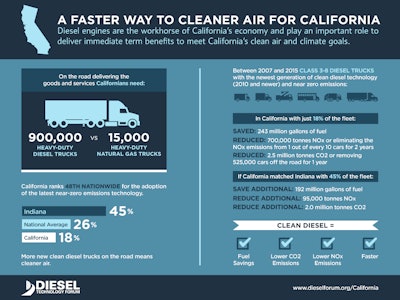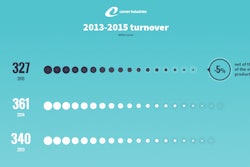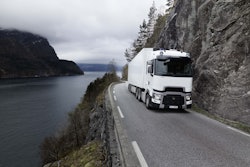
Over the last year, it’s been hard to read a newspaper or have a conversation about diesel where the VW emissions scandal hasn't come up.
As a former colleague and crisis communications expert said, “you are at the beginning of the beginning.” Now just a year into it, the wisdom of that statement is clearer with each passing news cycle. Defending diesel technology in the wake of this global crisis to wall off the perception spillover to the broader industry has been job one and continues unabated today.
To date, the conventional media coverage on has been saturating and global, with over 12,000 international news stories on the peak day. In Europe, the VW revelations were the flashpoint triggering action on a cascade of concerns. Simmering debates about real-world driving emissions in the EU moved rapidly to real-world policy making establishing new testing requirements for manufacturers. In Paris, London and some other European cities, policymakers adopted bans or restrictions on older diesel cars in city centers, while others reconsidered fuel tax policies that favored diesel over petrol.
Beyond the water cooler chatter, one immediate fallout is the higher attention to emissions compliance and conformance testing by regulatory agencies and industry. Time for final certifications has increased and the demands for data and supplemental information have grown; not just for passenger cars but across the board.
So, what does the VW situation mean, if anything, for diesel as a technology and for others in this business? Is there some bigger implication or fallout yet to come in the form of regulations or bias going forward?
The Diesel Technology Forum (DTF) has studied and analyzed the perception and impacts of the VW situation on the diesel industry at large, revealing many interesting findings from both online and telephone survey research of the general public and an exclusive group of policymakers.
One finding six weeks after the scandal broke is that just under half of the general public surveyed at that time were aware of the general situation. They identified it as a problem for VW, but not something they interpreted as inherent with diesel technology.
Policymakers surveyed were another story, with far higher recognition of the situation and much more nuanced views about how it influenced their perception of diesel technology in general.
It’s fair to say that the broader implications of this scandal on the use, regulation and acceptance and perceptions of diesel technology will be evolving for some time. Vigilance and high visibility communications efforts are needed to ensure a clear understanding about the new generation of clean diesel technology and its role as a solution to meet future climate, energy and clean air goals.
Beyond the perception and emissions conformance issues, there is some silver lining. Beyond the $10 billion for VW vehicle buyback/lease termination and $2 billion set aside for electric vehicles and infrastructure, the Environmental Mitigation Trust (a.k.a. the NOx mitigation fund) if finalized will pump $2.7 billion into the market for buying new vehicles and equipment. Eligible equipment includes school and transit buses, commercial trucks and some off-road engines including freight switchers, workboats and ocean going vessels, and some airport ground equipment.
Though not yet finalized at the time of publication, the initial allocation scheme has government fleets with higher allocation funding opportunities (100%) than private fleets (50%). All-electric technologies receive higher allocations than diesel and alternatives, including natural gas. For example, private fleets with 1992-2006 MY Class 8 trucks could receive 25% to 40% funding for new/repower with diesel or alternate fuel, or 75% for new/repower all-electric. School Bus operators (2006 and older) could receive 25% to 40% funding for new or alternative fuel or 75% for new/repower all-electric. Similar percentages for freight switchers, ferries, tugs and Class 4-7 local freight trucks. In each of these examples, government fleets could have 100% of the cost of the new vehicle paid by the Trust.
Every state will appoint a lead agency to ensure that state’s trust administration process and claim awards and verification meets the requirements of the overall settlement. Six states receive 39% of all funds with California ($381 million) leading the pack at over 14%, with Texas ($191 million), Florida ($153 million) and New York ($117 million). Thirty states get less than $30 million each.
The federal district court overseeing the settlement is expected to issue a final order sometime in October 2016, with the general expectation that the trust would payout nearly all claims within the first three years after being finalized.
The process will be competitive, with many interests lining up to cash in at every state’s door. Strangely, some of the eligible technologies (e.g. all-electric Class 8 trucks) included aren’t even commercially available, yet the Trust would pay almost all of the cost of this not-yet-existent vehicle. That and paying lesser amounts to technologies that are available today and proven to deliver reductions in NOx emissions raises questions about whether NOx mitigation is truly the main objective. Whether or not the Department of Justice and the Court alter the proposed settlement based on the many comments received will be important to watch. Any way you look at it, $2.7 billion to help customers buy new engines and equipment, especially in today’s slow-growth/no-growth economy, will be welcomed.
Never say never: nearer-to-zero
Not just new GHG and CO2 standards, but criteria emissions regulatory initiatives are also alive and well in 2016. The EU has just effectively adopted a new Stage V emissions standard for non-road mobile machinery (NRMM) engines, phased in beginning in 2019. Stage V standards include new provisions for in-service emissions monitoring as well as retrofitting of existing non-road engines. Other changes impact some marine engines. Stage V’s big news is the inclusion of new particle number standard limits (1 x 1012)/kWh. It also brings in previously excluded smaller engines from 0 kW to 56 kW for the first time. This new number standard appears effectively to be the means to require particulate traps on all new future machines and equipment. It also upsets the harmonization between EU Stage IV and U.S. Tier 4 Final, raising speculation about the next move on particulate regulations in the U.S. About half of the heavy-duty non-road engines and equipment currently achieve Tier 4 Final emissions compliance without the use of particulate traps.
Just six years after the final 2010 milestone for heavy-duty on-highway standards for NOx, another chapter is beginning; one that will seek to ratchet down NOx emissions even nearer-to zero than the current 0.20 g/BHP-hr standard. The EPA, with heavy influence from the California Air Resources Board (CARB), which established an “optional” low-NOx standard two years ago of 50-75% lower than the existing standard, now starts the process of exploring changes to the standard in the future.
A fundamental question here is whether there is a need for a lower NOx standard. New industry analysis presented at an August 2016 CARB workshop shows that the last several Air Quality Management Plans have consistently underestimated the observed rate of ozone reductions over time by a factor of two. This overstates future years’ ozone levels and in turn the need for NOx reductions strategies. With standards so close to zero, the costs for achieving such a standard by any technology will be hugely expensive.
This comes on top of the ink-still-drying EPA Phase 2 requirements for efficiency and GHG, which were lauded in an editorial by the NY Times: “With most of President Obama’s efforts to combat climate change tied up in litigation, it is heartening, if not downright astonishing, to see an industry targeted by an aggressive rule to reduce greenhouse gases welcoming that rule.”
Out with the old; in with the new
Achieving the societal benefits from new emissions or efficiency standards is premised on the idea that the new technologies are acquired and put into service. Tenuous economic conditions of the last few years have slowed the acquisition of new technology across the board.
Class 8 HDT sales in August were the weakest in that month in five years, and freight activity is weak and uncertain heading into 2017. Off-road and construction equipment acquisitions have been in the negative territory for some time, driven by slower housing and commercial building starts. Low commodity prices for corn and soybeans have put the brakes on a farmer's ability to invest at a steady clip in new Tier 4 Final compliant farm equipment.
Slow purchasing of new technology factors heavily into whether or not states, regions and even countries achieve their clean air, climate and energy goals in the expected time frames.
The Diesel Technology Forum working with IHS Insight has acquired and analyzed state commercial vehicle registration data the last few years to understand the level of penetration of two generations of new technology clean diesel engines (2007 model year and newer, and 2010 and newer) to then estimate clean air and fuel saving benefits.
Nationwide, acquisition of new commercial trucks (Class 3-8) is ticking upward. From 2014-2015 the percentage of trucks on the road that are 2007 and newer (i.e. with particulate filters) bumped up from 37 to 42%. For registrations of 2010 and newer technology, the national average is about 26% with Indiana leading all states at 46%.
A key finding is that California ranks 48th in the country with only 18% of the registered vehicles being the newest generation clean diesel. Whether the result of the business climate, regulatory environment or simply strategic business decisions, California now has one of the oldest commercial truck fleets on the road; an unlikely and unwelcome label for the state recognized as the most progressive for energy, climate and clean air policy. If more of California’s trucks were of the newer generation, the benefits achieved could be far greater.
Technology for heavy-duty on- and off-road engines has come a very long way. The pivot from clean air to efficiency is underway, but it’s increasingly clear that meeting the clean air challenges will still drive equipment and engine design for a while.
All the while, investments in the current generation of technology are edging along. With current engine emissions standards already near zero, there is a great deal to consider, not the least of which is how slowed acquisition of today’s new technology makes the legacy fleet role in achieving future clean air and climate goals more important. Getting more new technology on the road, the jobsite and in the fields is the fastest way to cleaner air and lower GHG emissions, not to mention more productivity, lower maintenance costs and greater fuel savings for customers—benefits everyone would value now, rather than 15 years from now.
















![Hcm Ax Landcros Press Release[32] jpg](https://img.oemoffhighway.com/mindful/acbm/workspaces/default/uploads/2025/11/hcmaxlandcros-press-release32jpg.mAEgsolr89.jpg?ar=16%3A9&auto=format%2Ccompress&fit=crop&h=135&q=70&w=240)

